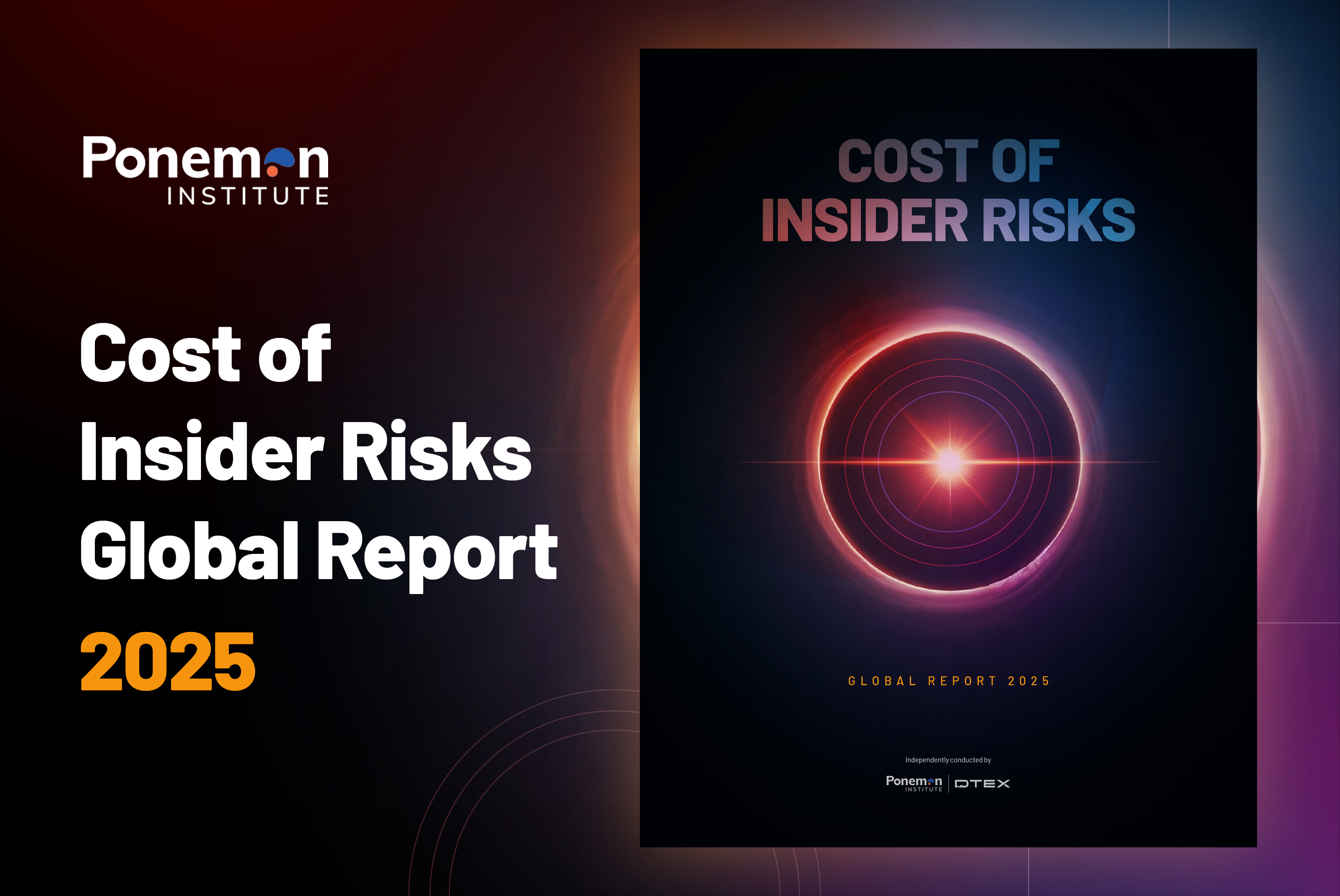Forrester TEI Highlights Value of Tech Consolidation and Analyst Efficiencies
DTEX commissioned Forrester Consulting to complete a Total Economic Impact™ (TEI) study to evaluate the business benefits of DTEX insider risk management and how the InTERCEPT™ platform enables organizations to combat common insider threat challenges. For those new to insider risk management (IRM) or struggling to get budget, the report is particularly helpful in providing some tangible benefits of DTEX, walking through how peers across industries came to the decision to invest. It details the IRM space, including the critical nature of understanding user behavior, and having the tools to identify when valuable data is being impacted.
To develop the model, Forrester interviewed five current enterprise customers from a range of critical industries including technology, telecommunications, pharmaceuticals, banking, and energy, who have deployed the InTERCEPT platform at scale. The results were combined to form a single composite organization.
Common Insider Threat Challenges
The study confirmed that organizations across industries, regardless of size, struggle with the same challenges related to insider threats:
- An increasingly complex security stack with multiple point solutions is hard to manage and challenging to identify the true gaps in security posture.
- Insufficient visibility and delayed insights put analysts in a reactive state, making it hard to proactively investigate and mitigate risky and unusual activities.
- Limited resources are the result of limited budgets and difficulty hiring and retaining skilled security personnel.
- Susceptibility to insider-led data breaches is often due to alert fatigue, lack of visibility, reactive approaches, and lengthy incident containment and resolution times.
Prior to using DTEX, these large enterprise organizations had limited capabilities to stand up a comprehensive insider risk program. Despite having many point solutions, including data loss prevention technology, they all had trouble identifying and stopping data leaks, account misuse, AI abuse, intellectual property (IP) theft, as well as compounding behaviors like flight risk, covering tracks, co-employment, and more. All organizations interviewed were looking for a solution to streamline insider threat workflows so they could spend their time on more strategic areas.
Quantified Benefits of DTEX InTERCEPT
According to the Forrester study, quantified benefits with DTEX included some exciting findings:
- Tech stack consolidation worth $3.3 million over three years. Consolidating multiple security functions into a single, integrated platform, and retiring costly legacy solutions decreased security stack TCO.
- Insider risk efficiencies worth $705,000 over three years. Analysts made productivity gains with comprehensive, real-time visibility into user activities with full context, reducing the time required for investigations.
More Value with DTEX
The study also found that DTEX InTERCEPT platform effectively protected IP and avoided data breach costs. InTERCEPT users confirmed that the platform proactively identifies risky behavior and data exfiltration attempts with higher accuracy than other products, thanks to its ability to continuously assess user behavior and context.
It was great to validate that DTEX helped solve a number of less obvious challenges for those interviewed like streamlining security policy configuration and management, reducing shadow IT, and improving collaboration between security and other teams. Insider risk spans otherwise siloed groups but legal teams are often tasked with providing compliance guidance and HR assists in recognizing insider risks. With DTEX, organizations strengthened cross-functional collaboration and threat management efforts.
The study explains that organizations often wait for an incident to happen before stepping back and considering the effectiveness of their security stack, the investment in their tools, and how well their security analysts manage workflows and mitigate threats.
We basically had escalated the program because we had a bad thing happen. A person left the company and took one of our most confidential documents with them, and that escalated everything. This was the use case that we needed from a UEBA tool, but we were not able to get it done [in our prior environment].
–VP of cybersecurity at a banking organization
This study provides an opportunity to get proactive in planning and read the lessons from peers in the industry to avoid making the same mistakes. Read the full Forrester TEI study to understand how you can reduce your TCO while achieving more proactive outcomes from your security stack.
Topics
Subscribe today to stay informed and get regular updates from DTEX Systems






